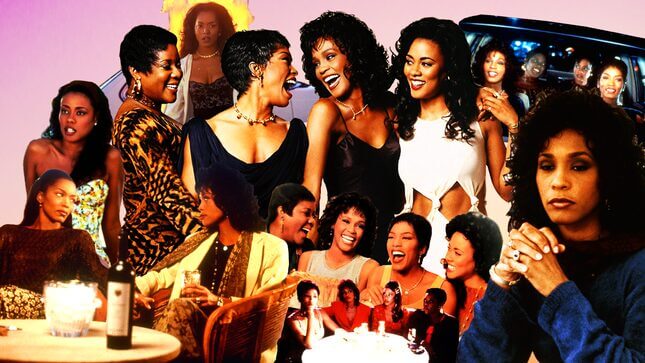
Graphic: Elena Scotti
In the Theodore Witcher film Love Jones, during a moment of playful teasing between girlfriends, Josie (Lisa Nicole Carson) tells Nina (Nia Long) that her cynicism regarding love is slowly making her sound “ like a Terry McMillan character.” Nina chuckles and calls her cold, not upset but a little distressed that her problems seem a little too similar to those faced by the black women in McMillan’s work. The line was said in 1997, almost two years after the premiere of Waiting to Exhale, the author’s most lauded work turned into a film by the steady hand of actor-director, Forest Whitaker. There’s a lot that’s right about the adaptation; a solid script, talented actors and a breathtaking soundtrack, but one of the most outstanding details is the style choices.
From the geometrically patterned tops and structural jewelry to the headbands and crop tops, all were perfectly tailored and carefully chosen to suit both the characters and the viewers who would flock to watch the film, leading to a box office total that made almost six times of its $16 million budget. In all the ways the aesthetics of Black women have shaped and defined fashion—while being forced to exist outside of pop culture—Waiting to Exhale is a fitting and luscious homage to the varied and dynamic glamour of black women. Recently, Netflix announced that the film would finally be available on the site and so I re-watched it—for the second time this year—on a screen much bigger than my computer and felt a newfound appreciation for the languid and lush looks juxtaposed by the wide and arid space of Arizona.
Waiting to Exhale is a fitting and luscious homage to the varied and dynamic glamour of black women.
The film starts a few hours before the new year with Savannah (Whitney Houston) closing the distance between Denver and Arizona in her convertible with the top down, curls wrapped underneath a loosely tied scarf. Her monologue contains hopes for better relationship prospects in the desert city that’s also home to her closest friends—Bernadine (Angela Bassett), Robin (Lela Rochon) and Gloria (Loretta Devine). All four are at points of fractured transitions in their romantic lives but their hearts remain open, their bonds of friendship unwavering and their clothing reflective of women whose styles represent personalities, moods, and aspirations. As the celebrations get underway, the camera moves to Gloria, the hardworking single mom whose yellow chiffon headwrap is a pop of refreshing color, then to Robin in a comfortable oversized white tee showing her easy-going nature, to Bernadine sitting by her vanity in lace and diamonds with the pained knowledge that appearances are everything. Viewers step into a new year with Savannah whose entry into Arizona’s social life ends with her in a black figure-hugging, spaghetti strap gown showing someone who always hopes for the best but only on her own terms.
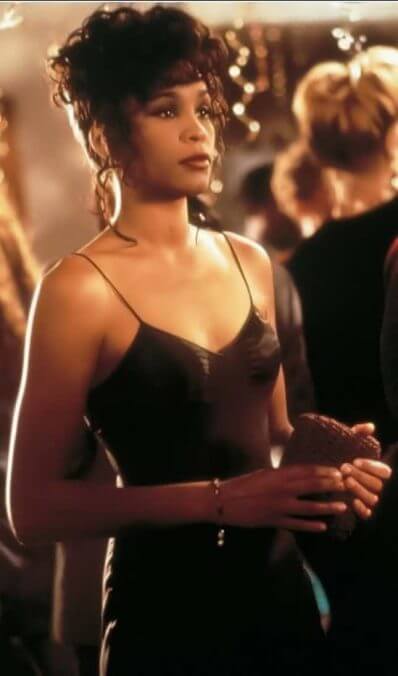
Under the guidance of costume designer, Judy L. Ruskin every piece was selected to suit the idiosyncrasies of each woman, while also placing them firmly in the realm of classic cinematic looks. Robin’s white linen dress with the thigh-grazing slits was the stuff of dreams, topped with a bare midriff visible through cutouts that were knotted at the top and bottom in a diamond formation. Different iterations of the dress have made their way to Fashion Nova, Pretty Little Thing, Revolve, and countless sites built off fast fashion for mass consumption and an unending stream of heart-eye emojis. But I have yet to see someone wear this look in a way that makes me forget Rochon wore it first, and Troy was a straight punk for taking her to some wack house party in a fit that stunning. As she leaned by the door contemplating once again falling for a man based solely on lustful potential, Robin in that dress is a look to stand alongside Audrey Hepburn’s black number in Breakfast at Tiffany’s.
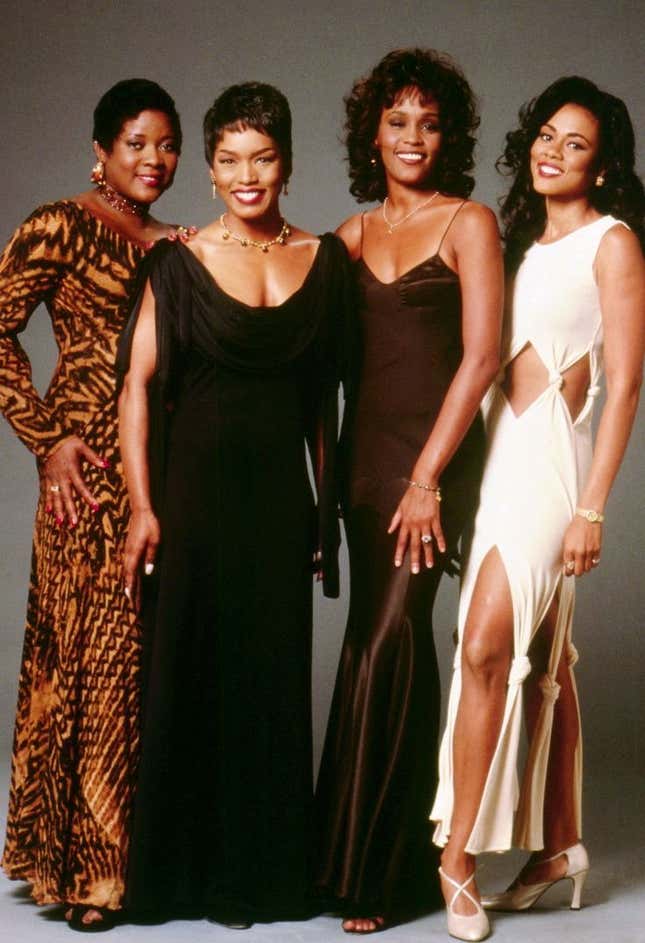
In a Flix interview shortly after the film’s premiere, Bassett offered this candidly earnest response when asked what it was like to be part of a powerhouse ensemble of women: “All the cameras, all the lights, they are on you. They are on the women. And the story that we are telling is about us.” For the creators behind the scenes, the fact that these actresses would be present in every frame meant it was paramount they be shown with the same love and care with which their characters had been written. Whitaker and cinematographer, Toyomichi Kurita gorgeously lit various complexions of black skin, highlighting lipstick shades in browns, flesh-colored nudes, copper-toned reds, and deep soothing purples. The late makeup artist, Roxanna Floyd whose work can be seen in most of Queen Latifah’s hits from Brown Sugar to The Last Holiday, was responsible for Angela Bassett’s dazzling face. As the one playing a character betrayed and mistreated by the husband she had once loved, Bassett as Bernadine shifted into moments of rage, unexpected joy, and newfound desire, sometimes simultaneously. Her emotions were swinging in extremes, and Floyd gave her an almost incandescent look to portray the fiery intensity.
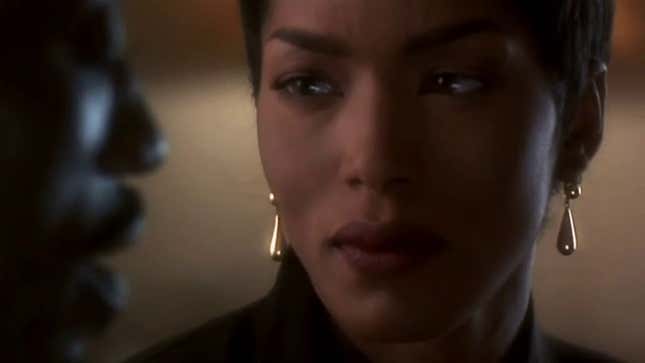
More than one film critic labeled the film “escapist,” something to watch and whisk you away from boredom and monotony. But that seems reductive, placing the film in something of a fantasy arena when it’s so firmly entrenched in the complicated lives of the women it sought to represent, women who author McMillan had seen amongst her circle of friends and in her own experiences. Whenever I’ve watched the film, I have been very much present and hyper-aware of the goings-on on-screen. Paying attention to how the aesthetics of black womanhood are visually accompanied by the voices of Brandy, Chaka, Toni, Aretha, Mary J., Cece, Chanté, SWV and TLC, and how such a purposeful curation of space can only lead to you feeling the most intentional of emotions at being so boldly placed center stage.
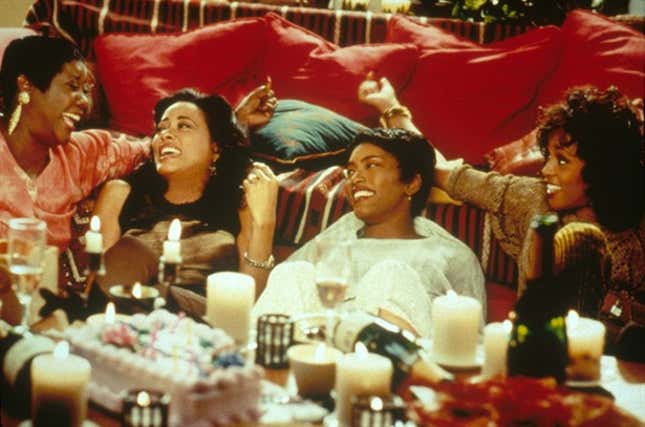
It’s a well-paced film, and the camera lingers on its lead actresses giving them time to let their words sink in while also letting their style choices breathe. After Bernadine’s separation from “the improper influence,” a ladies’ night out looked like going to a bar and scoping the lack of options. Tucked away in a booth, Gloria’s ensemble is a mix of purple and lavender, Robin’s side-swept fringe is pinned back with two sparkling barrettes paired with a fiery red woven top to match Savannah’s equally bright blazer, which complemented Bernie’s gold sleeveless top and skimming black skirt. A large number of the film’s most beloved stills feature all four women, whether in the bar or on the couch smiling brightly in casual knits and velvet, with candles lit to add a golden hue.
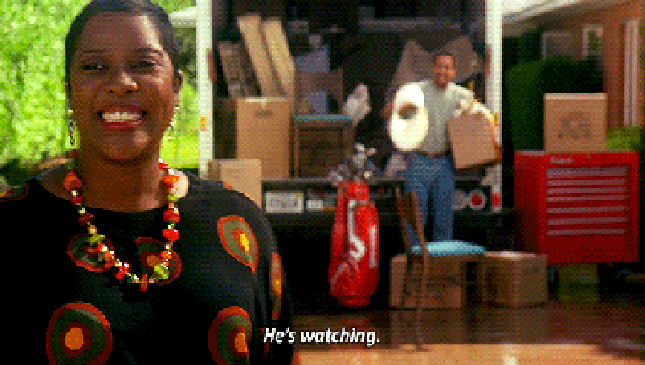
As a filmmaker, Whitaker understood the power of visuals accompanied by action and so every memorable scene came hand in hand with a phenomenal outfit. When Bernadine was burning trash while in a white robe and lace bodysuit; or when Gloria was meeting her next-door neighbor for the first time in a patterned black peplum blouse with a multi-colored necklace. Robin’s tight orange halter neck dress followed by, “A white woman can have your sorry ass,” retort. And Savannah finally leaving her married lover while decked in a mauve, buttoned-down suit. Even at their most vulnerable, when sharing the broken promises of those they’d trusted and the choices they’d made to have it all, their clothing acts as a reminder that even with so much pain, looking good was something they chose to do for themselves. It helped, for a little while and this is most clear during Savannah and Robin’s pool day with the latter in a strapless floral bathing suit whose white daisies matched Savannah’s high-waisted pants and plain scoop neck t-shirt.
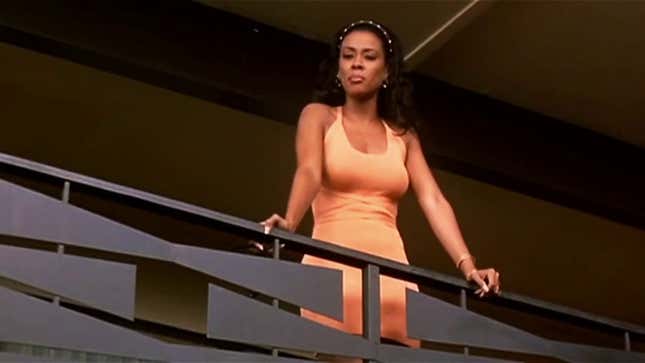
Waiting to Exhale exists in a too-small canon featuring films dedicated to spotlighting black women who wanted to be loved as much as they wanted fulfilling careers. When it comes to fashion, it stands alone as something that allowed its characters to have fun with fashion, to be whimsical and to delight in the act of getting yourself ready for the world. It’s a visual ode to black femme aesthetics and like Bernadine sitting by the bar after her first divorce trial, the fashion was self-assured, effortlessly executed, and carefully chosen to be both armor and an introduction.
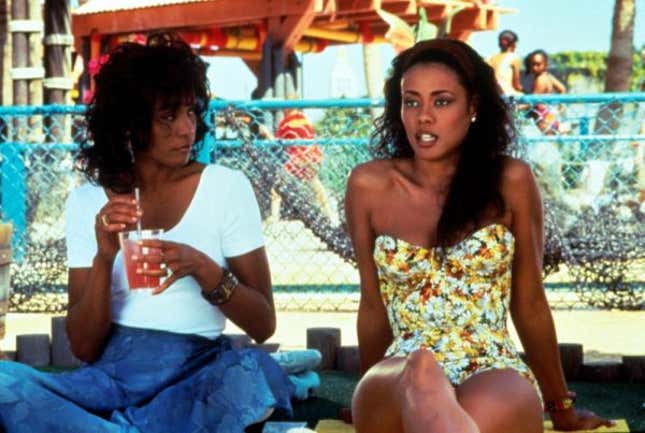
Tarisai Ngangura is a journalist and photographer documenting black lives across the globe. Find her on Twitter @FungaiSJ.